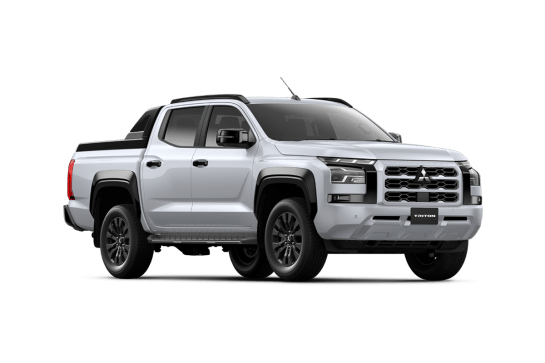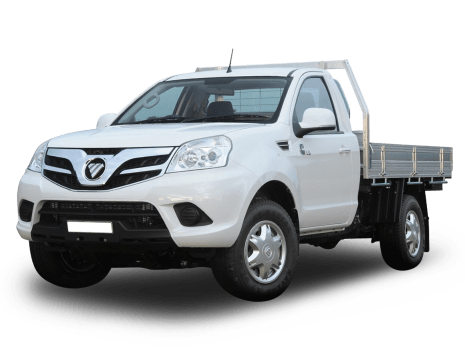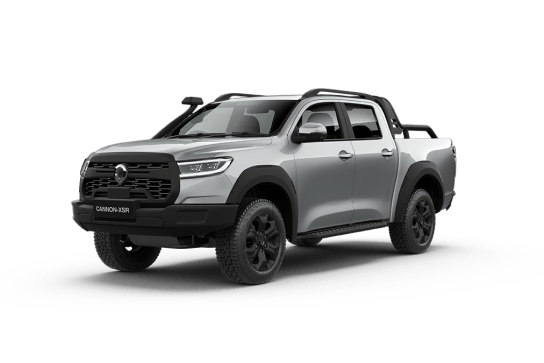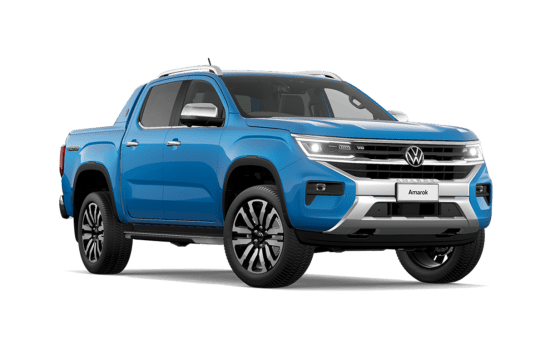
Mitsubishi Triton VS LDV T60
Mitsubishi Triton
Likes
Dislikes
LDV T60
Likes
- Overall value
- Refreshingly straightforward to drive
- Much improved safety suite
Dislikes
- Was expecting more from new suspension
- Software and on-board tech should be better
- Drivetrain still a bit rough around the edges
Summary
Mitsubishi Triton
So, you’re looking for a dual-cab ute. You want something that can do it all. Tough, family friendly, and right in the sweet spot when it comes to price.
You’re also looking for something a little different to Australia’s two favourites, the Ford Ranger and Toyota HiLux. Maybe you find them too expensive, maybe you find them too popular, or maybe you find the HiLux too old and the Ranger too digital.
For this test, we’ve grabbed the next two down in terms of popularity. Both are built by Japanese automakers in Thailand, and both have a reputation for being as tough as they come.
Read more about
- Beefed-up ute approved for Australia: Isuzu D-Max Blade gets Walkinshaw treatment to take on the Toyota HiLux GR Sport, Nissan Navara Warrior and maybe even Ford Ranger Raptor
- Iconic badges to return? Mitsubishi Lancer and Montero nameplates trademarked in the US suggest Nissan Patrol twinned Pajero and Nissan Leaf relation are coming
- Will the new 2025 Kia Tasman ute be a hit? We examine whether newcomers such as the BYD Shark plug-in hybrid ute can match the might of the Ford Ranger and Toyota HiLux | Analysis
On the one hand, we’ve got the new-generation Mitsubishi Triton in GLS form, and on the other, we’ve got the facelifted Isuzu D-Max in LS-U+ form. Both are well-equipped dual-cabs in 4x4 form which sit second from the top of their respective ranges.
Will we be able to crown one a winner for work, play, and family duties? Read on to find out.
| Safety rating | |
|---|---|
| Engine Type | 3.0L turbo |
| Fuel Type | Diesel |
| Fuel Efficiency | 8L/100km |
| Seating | 5 seats |
LDV T60
So, you’re after an affordable alternative to the increasingly expensive Toyota HiLux and Ford Ranger. You need it to be tough enough for work, but also big and comfortable enough to haul family every now and again.
It’s a common predicament, and one that's increasingly served by Chinese and Korean alternatives.
Today, we’re looking at LDV’s latest effort - the T60 Max Plus. While it looks like just another new variant from the outside, it’s hiding some significant changes underneath, and it takes its place at the top of the T60 range in 2024.
Read more about
- 2025 LDV GST next-gen electric ute here sooner than expected - what could be Australia's first electric 4x4 ute to arrive potentially before the end of 2024
- LDV defends eT60 electric ute as a 'necessary step' in the electrification of the commercial sector
- Most popular Chinese car brands in Australia in 2024: With models like the GWM Haval Jolion, Chery Omoda 5, BYD Seal and MG ZS, which carmaker is topping the charts?
Could it be the right ute to fit your budget? Let’s take a look.
| Safety rating | |
|---|---|
| Engine Type | 2.0L turbo |
| Fuel Type | Diesel |
| Fuel Efficiency | 9.3L/100km |
| Seating | 5 seats |
Verdict
Mitsubishi Triton/10
It’s a tough test for two tough utes, which are more evenly matched than we first expected. It’s clear both also make great alternatives to the HiLux or Ranger.
The Triton’s asking price is more affordable. It has solid ownership terms as well as a sleek, modern, and spacious cabin. It also has a higher payload and a handful of additional safety kit. On value (and our scoring system) alone, it’s hard not to award it the win.
However, this doesn’t make the D-Max a loser by any stretch. It impressed in areas I didn’t expect. Its cabin is more comfortable even though it doesn’t feel as big. It boasts a better ride quality and faster, smoother power delivery when compared to the Triton. After our rigorous testing, it was the ute I subjectively preferred driving home in at the end of the day.
| Triton GLS 4x4 | D-Max LS-U+ 4x4 |
Price and specs | 8 | 7 |
Practicality | 8 | 7 |
Design | 8 | 7 |
Engine and transmission | 7 | 8 |
Fuel consumption | 7 | 7 |
Driving | 7 | 8 |
Safety | 9 | 8 |
Ownership | 9 | 8 |
Final score | 7.9 | 7.5 |
LDV T607/10
The Max Plus brings a lot of welcome upgrades to the T60 range, particularly in its previously non-existent active safety suite, but it’s not all good news. There are still a few areas where this ageing ute could use a lot of polish.
Still, there’s something to be said for how refreshingly straightforward much of it is, and for the most part its specs and features are up to the task of competing with many more expensive alternatives.
Design
Mitsubishi Triton
Both versions of these utes arrived this year, one a new-generation, the other a facelift.
We’re straying into subjective territory as always with design, but to me the Triton gets an advantage. Clearly its latest generation has been cause for a blank canvas redesign, and the result is a much more contemporary looking vehicle from the outside.
Its light profile, imposing width and wheel stance, as well as its tidy body panels make it stand out from the crowd, particularly at its price point. Sure, it doesn’t have the brash American appeal of the Ranger, but it looks more modern than the facelifted D-Max on this test at any rate.
On the inside it continues its modern look and feel, and also features plenty of clever little design touches to push Mitsubishi’s diamond theme. This is reflected in surprising places, like the knurling on the volume dial or reflected in the headrests of the seats. The cabin feels spacious and wide, and is brightened up a bit with a tasteful smatter of silver in the cool bar-style vents. It also features bright and sharp screens with decent if uninspired software.
Meanwhile the D-Max stays the course for this update with a slightly more aggressive treatment in its grille and rear light clusters. Its overall visage is one of a conservative ute which plays it quite safe in terms of design queues. It does keep with the tough reputation of the D-Max badge, but in my opinion runs the risk of feeling a little dated with so many newer-looking options on the market, ranging from its Triton rival here to the Ranger and VW Amarok.
This tough but rugged theme continues on the inside, with a few redeeming features that may surprise you. On the whole it’s a bit of a greyscale space with plenty of hard plastics, but there are soft-touch surfaces in all the right places which offer a bit more sponge than those in the Triton. It also manages to maintain Isuzu’s current hexagonal design motif, which is reflected in the wheel, buttons, dash cluster and even the seats.
For this update the D-Max also has an improved software suite, although it’s still a bit clumsy in terms of its layout compared to the simple menus in the Triton.
Which seats are better for spending time in? Despite its more rugged appeal, I was surprised to find the D-Max had the better of the two seats simply because you sink into them more. Even the leather trim on its steering wheel is softer and nicer to hold.
Do we have a winner? Despite the D-Max proving to be quite comfortable, in terms of aesthetics and providing a modern, spacious cabin, it’s the Triton.
LDV T60
The T60 Max Plus takes the visage of a factory-kitted version of the existing T60 Plus. The most notable difference this time around is the unique gloss black grille design which features a new spot to hide the front radar array for the safety suite, alongside new gloss wheel designs and that huge sports bar fitting atop the tray.
To my eye at least the T60 looks a fair bit more rugged and industrial than most of its rivals, which with every iteration are looking more like passenger vehicles than work-ready utes. Still, there’s an aggressiveness to its contrast black trims and tall ride height which may appeal to some. For others it will be more function-over-form, with less bumper overhang than something like the SsangYong Musso and there’s something to be said for that, too, I suppose.
Inside is where this Max Plus version sets itself apart from the rest of the range with its abundance of screen real-estate, upgraded materials, and an almost EV-like centre console treatment.
It’s certainly more digital-feeling and contemporary than the rest of the T60 range, but it might lose some of the simple but rugged appeal of its interior as a result.
The screens look pretty slick, especially when you’re using phone mirroring to hide the otherwise clumsy stock software suite. It’s one thing to have nice big screens, it’s quite another to have slick, attractive, and customisable software to match.
Sadly, that’s not the case for the Max Plus, which offers one lacklustre look and feel for the dash cluster, paired with an array of confusing menus on the multimedia screen.
Practicality
Mitsubishi Triton
Dimensionally, the Triton is longer and taller but slightly narrower than the D-Max (although, it does not feel it), while the D-Max actually gets a longer but much narrower tray. See the full dimensions in our table below.
In terms of storage and adjustability in the cab these two are quite evenly matched. Both offer eight-way power adjust seats in the spec tested, and both offer telescopic adjust for the steering column. Both get large bottle holders in the doors and in the centre console, although without adjustable ridges, neither are perfect when it comes to holding different sized bottles.
Only the Triton scores a wireless charging bay below its climate controls, while it also offers a larger centre console box.
Both have easily adjustable screens with the new-generation Triton committing nicely to dials for tuning and volume, and the D-Max notably re-introducing them for this update. Again, the Triton’s software is more simply laid out, and its screens are brighter and sharper than the units in the D-Max.
Both cars score an array of easy-access toggles on a dedicated climate panel, saving you the need to negotiate with touchscreen menus, so they’re evenly matched on that front.
The rear seat is differentiated mainly by the additional width seemingly on offer in the Triton, which feels as though it could seat an adult in the middle position in relative comfort. It scores bottle holders in the doors and drop-down armrest, as well as two USB-A ports on the back of the centre console and adjustable air vents in the roof. Additionally, the Triton gets a clever set of pockets on the back of the passenger seat suited to various device sizes. I fit quite comfortably behind my own 182cm tall driving position in the Triton, although I did feel as though I was seated very far off the ground.
Meanwhile the D-Max’s rear seat offers the same spongy seat trim as in the front seats, although overall it feels narrower than the Triton. It, too, scores bottle holders in the doors and two additional small ones in the drop-down armrest, although it only offers a single USB-C outlet on the back of the centre console. There are also two adjustable air vents down there. And an odd little storage tray. Unlike the Triton, the D-Max comes with a bonus coat hook on the back of the front seat. It feels as though I have slightly less room in the D-Max, but it is still sufficient and just as comfortable.
The Triton has a noticeably larger tray than the D-Max. See the full figures in the table below, but the core part of the story is the Triton’s tray is much wider and offers more useful space between the arches, while the D-Max’ tray turns out to be slightly longer. Both come from the factory in this spec fitted with a plastic tub-liner, but neither come with a roller cover unless you delve into the options list.
Payload is nearly 100kg higher in the Triton compared to the D-Max, although both utes share the same rated towing capacity at 750kg unbraked and 3500kg braked. The Triton gets an alloy spare while the D-Max gets a steel spare.
Off-road prowess was not the focus of this Tradie Guide review, but if you’re curious to see the technical figures, they’re in the spec table below.
Do we have a practicality winner? Seems like the Triton gets ahead here slightly with its higher payload, wider tray, and more spacious-feeling cabin.
| Triton GLS 4x4 | MU-X LS-U+ 4x4 |
L x W x H | 5320mm x 1865mm x 1795mm | 5285mm x 1870mm x 1790mm |
Kerb weight | 2125kg | 2110kg |
Payload | 1075kg | 990kg |
Towing capacity b/ub | 750kg/3500kg | 750kg/3500kg |
Tub capacity L x W x H | 1555mm x 1545mm x 525mm | 1570mm x 1530mm x 490mm |
Tub Width between arches | 1135mm | 1122mm |
Spare | Full-size alloy | Full-size steel |
Tub liner | Y | Y |
Tonneau cover | N | N (ours fitted with a manual roller $3521.76) |
Off-Road
| Triton GLS 4x4 | D-Max LS-U+ 4x4 |
Clearance | 228mm | 240mm |
Approach | 30.4 degrees | 30.5 degrees |
Departure | 22.8 degrees | 19 degrees |
Breakover | 23.4 degrees | 23.8 degrees |
LDV T60
There are some benefits of the new interior design, and there are some disappointments too. These begin with the seating position, which is still miles off the ground in its lowest setting. This might give you a commanding view of the road, which has benefits, but it also makes you feel like you’re sitting on the T60 rather than in it.
The steering wheel is also only pitch adjustable rather than also offering telescopic adjustment, and even then its range of movement is extremely limited. For me, at 182cm tall, this meant the wheel blocked the top of the digital instruments, and I also felt like I was far too close to the roof. It’s an awkward seating position to say the least.
However, the new cabin layout has quite a bit of storage to play with. There are functional bottle holders and pockets in the doors, a decent glove box, and the new centre console offers a huge tray underneath with a removable dual cup holder insert, which also has two little cutaways for storing your keys. This area also hides some USB ports and a 12-volt outlet, for a nice cable-free interior if need be. The armrest console box offers even more space, and the wireless phone charger perched atop the console area is a welcome touch.
Less impressive is the strip of touch-based controls for the climate which sits underneath the multimedia screen. At least it has some controls which don’t require a screen sub-menu to navigate, but it simply doesn’t compare to having actual buttons and dials.
The most puzzling part of this equation is the lack of physical controls of any kind for the headlights, and no way for the passenger to adjust volume without needing to go one or two sub-menus deep. Inconvenient at best, potentially dangerously distracting at worst.
Again, some rivals get an edge here. The Musso’s multimedia suite looks comparatively old, but has heaps of physical buttons, while the GWM Ute Cannon splits the difference, maintaining buttons but gaining confusing menus. Both are better to use than the T60.
The back seat came as a surprise, as it offers pretty decent legroom for a full-sized adult, something quite rare in this ute segment. It also offers pockets on the backs of both front seats, dual adjustable air vents and a USB port on the back of the centre console, two small bottle holders in the doors, and a further two in a centre drop-down armrest. Underneath the seats there’s access points to small storage areas below.
The tray area seems reasonably well appointed with a pre-applied spray-in tub liner and four tie-down points at the extremes of the bed. The tub dimensions come in at 1485mm long, 1131mm wide (between the arches), and 530mm tall for the standard version. The Mega Tub variant extends the length to 1800mm. Payload for the tray is 840kg for the manual, 830kg for the auto, and 800kg for the Mega Tub.
Interestingly, despite its new coil-sprung rear, the T60 Max Plus maintains its 3000kg braked towing capacity, which isn’t the 3500kg industry standard, but is pretty close.
These specs mean the standard tray version is slightly larger than the Ssangyong Musso with a slightly higher payload, although it can tow 500kg less. It has a lower payload and a smaller tray than the GWM Ute, although it can tow about the same amount.
Price and features
Mitsubishi Triton
First up, let’s talk price-tags. Usually, if you want all the luxuries without spending too much, this second-from-the-top variant is where it’s at, and our two competitors here are very closely matched.
Straight away, the Mitsubishi Triton GLS appears to get a clear advantage. At $59,090 before on-roads, it’s nearly $6000 more affordable than than its D-Max LS-U+ rival here, although to make it match spec-for-spec, you need to add $1580 to its price-tag for the Deluxe Pack which adds things like leather seat trim, heating, and power adjust for the driver.
Meanwhile, the D-Max LS-U+ needs no extras added, but is significantly more expensive, starting at $65,500. Our test example also had a manual roller cover fitted, which adds a further $3521.76 to the price, but doesn’t affect the outcome here as the Triton doesn’t get one as standard anyway.
Both of our utes here score 18-inch alloy wheels clad in highway terrain tyres (on the spec sheet, our test Triton had all-terrains for some reason), LED headlights, 9.0-inch multimedia touchscreens, 7.0-inch digital instrument elements, keyless entry with push-start, dual-zone climate, and side-steps.
Both get wireless Apple CarPlay connectivity, but only the D-Max gets wireless Android Auto (it’s wired in the Triton), however, the Triton hits back with its wireless phone charger which is missing from the D-Max. The D-Max also gets auto walk-away locking, but misses out on the auto folding mirrors the Triton gets. Technically, the D-Max has more speakers, but the Triton’s audio system sounded better.
Check out the table below for the full specs laid out neat and tidy.
In terms of which one is a winner here? They’re such a close match it’s too close to call on features alone, but the Triton’s price advantage, even with the Deluxe Pack, is hard to ignore.
| Triton GLS 4x4 (Deluxe Pack) | D-Max LS-U+ 4x4 |
Price (MSRP) | $59,090 (+1580) | $65,500 |
Wheel size | 18-inch alloy | 18-inch alloy |
Tyre | Maxxis A/T | Bridgestone H/T |
LED headlights | Y | Y |
Multimedia screen | 9.0 inches | 9.0-inches |
Apple CarPlay/Android Auto | Wireless CarPlay, wired Android Auto | Wireless CarPlay and Android auto |
Wireless phone charger | Y | N |
Digital dash | No (7.0-inch info display) | Partial (7.0-inch centre) |
Seat trim | Leather (Deluxe Pack) | Leather |
Speakers | 6 | 8 |
Climate | Dual-zone | Dual-zone |
Power adjust | Driver (8-way - Deluxe Pack) | Driver (8-way) |
Heated seats | Front (Deluxe Pack) | Front |
Connectivity 1st row | USB-C, USB-A, 12v | 2x USB-C, 1x USB-A (Dashcam), 12v |
Connectivity 2nd row | 2x USB-A | 1 x USB-C |
Rear air vents | Y (roof) | Y (console) |
Keyless entry and push-start | Y | Y |
Sidesteps | Y | Y |
Auto walk-away lock | N | Y |
Auto-folding wing mirrors | Y | N |
Built | Thailand | Thailand |
LDV T60
The T60 Max Plus is the new top-spec version of one of Australia’s most affordable new utes. From the outside it looks very similar to the Max Luxe which sits below it, but hides re-worked suspension, an overhauled interior, and some extra safety kit behind its tweaked grille.
It also continues to be available as a manual at $48,411, an automatic at $50,516 and as an extended ‘Mega Tub’ version at $52,092. LDV deals in drive-away pricing, and you’ll note these prices are roughly equivalent to low-grade versions of the industry leading utes like the Ford Ranger and Toyota HiLux.
The T60 is more likely, however, to compete with other low-cost ute options, like the GWM Ute Cannon also from China (from $52,990 in equivalent XSR form) or the SsangYong Musso from Korea (from $49,500 in equivalent Ultimate form).
Standard equipment is reasonably impressive, with 18-inch gloss black alloys, LED headlights, a sports bar out the rear, spray-in tub liner, a locking tailgate (for the first time), and an abundance of gloss black highlight trims to separate it from lesser models in the range.
On the inside the highlight of the overhauled design is the dual 12.3-inch screens which make up a dash-spanning digital suite. It comes with new-ish software which looks the part at a distance, although I was a little dismayed to discover it had limited functionality, only one ugly theme for the dash cluster, and minimal customisation.
You also score (very) synthetic leather seat trim with power adjust for the driver and front passenger, and an expanded array of soft-touch surfaces throughout. It looks modern and plush from a distance, but feels less impressive once you’re actually inside.
If you want a ute which does a better job of feeling more like a luxurious passenger car, the SsangYong Musso leans into this aspect harder, and if you want something that's bit more accessorised for the rough stuff the GWM Cannon XSR looks more the part. Ultimately it feels as though this new top-spec T60 is left in something of an awkward middle ground between the two.
Of course, the new safety equipment and suspension do add something to the T60 formula, but we’ll talk more about these later in the review.
Under the bonnet
Mitsubishi Triton
Our utes again seem quite evenly matched. Both have diesel engines, both have a six-speed automatic transmission, both have 4x4 capability with low-range transfer cases, and both have locking rear differentials. One, however, comes out on top when it comes to pure numbers.
The Triton uses an upgraded version of the engine used in the previous-generation truck. It still measures 2.4-litres of capacity across four cylinders, but is now twin-turbocharged. Total power comes to 150kW/470Nm and peak torque arrives from 1500rpm.
Meanwhile, the D-Max continues to employ its renowned 3.0-litre four-cylinder single-turbo engine from the brand’s light-duty commercial range, producing a sturdy 140kW/450Nm. Peak torque arrives from 1600rpm.
A winner? The Triton’s additional power is backed by a higher payload, so we’re inclined to hand the win to it, although there’s more to the story in the driving and load test section of this review.
| Triton GLS 4x4 | D-Max LS-U+ 4x4 |
Capacity | 2442cc | 2999cc |
Cylinders | 4 | 4 |
Turbo | Twin | Single |
Power | 150kW | 140kW |
Torque | 470Nm | 450Nm |
Transmission | Six-speed | Six-speed |
Diff locks | Rear | Rear |
LDV T60
The T60 Max range lays claim to one of the most powerful 2.0-litre four-cylinder diesel engines - a bi-turbo unit producing 160kW/500Nm with peak torque arriving from 1500rpm.
It is mated to either a six-speed manual, or an eight-speed ZF-sourced torque converter automatic transmission.
It has a 2H, 4H, and 4L selector (alongside an automatic setting for the Plus Max), and is equipped with a rear differential locker (which can only operate below 30km/h).
For those looking to venture well beyond the tarmac the T60 Max Plus has a 27-degree approach angle, a 24-degree departure angle, 220mm of ground clearance, and a 19-degree rampover angle. Wading depth is 550mm, and it has a 12.7-meter kerb-to-kerb turning circle.
Efficiency
Mitsubishi Triton
We ran a distance-controlled fuel test on both vehicles in the kinds of conditions we reckon tradies will drive them in. This included about 65km straight through the middle of Sydney on expressways and high-traffic urban roads, then about 55km as part of a return journey on the freeway.
The results were interesting because both vehicles were very close but used less fuel than the official claim, check the table below for details.
Both can claim nearly 1000km on the official consumption numbers, and neither is a hero when it comes to carbon emissions - check the figures out in the table below. Only the Triton requires AdBlue which will occasionally need to be topped up.
| Triton GLS 4x4 | D-Max LS-U+ 4x4 |
Diesel consumption (official/combined) | 7.7L/100km | 8.0L/100km |
Diesel consumption (on-test) | 7.9L/100km | 7.8L/100km |
Fuel tank | 75L | 76L |
Est. driving range | 974km | 950km |
C02 | 203g/km | 207g/km |
AdBlue | Y | N |
LDV T60
The official combined fuel consumption of the diesel-only Max Plus is 9.3L/100km for the manual or 8.9L/100km for the automatic.
With over 500km of testing with plenty of freeway miles, our automatic example produced an as-tested number of 9.3L/100km.
Driving
Mitsubishi Triton
Both utes on this test provide a very competent and nearly SUV-like experience, and while you can do even better in this segment with the likes of the Ford Ranger or Volkswagen Amarok, these two are very evenly matched. Still, there are some subtleties that may affect your choice.
Triton unladen driving
Starting with the Triton, and straight away you notice its excellent visibility and commanding driving position. The modern feel for the cabin is reflected in the driving experience thanks to a tidy layout, easy operation of screens and dials, and relatively straightforward software.
The steering is notably heavier in the Triton and it takes more effort to drive over longer periods of time, as a result it can be more fatiguing. It does lend itself to plenty of feel in the corners and on uneven terrain, however.
The ride is also firmer in the Triton. It can deal with undulations and larger bumps quite well, but smaller, sharper road imperfections were communicated to the cabin. On the other hand, the cabin feels overall more refined, with not as much road and engine noise making its way inside. The wider track on this new-generation version offered plenty of stability and confidence in the corners.
When it comes to deploying power the Triton certainly feels as strong as a dual-cab should, although a slight moment of additional lag required to actually get the power to the wheels was notable, even though technically peak torque arrives at lower rpm in the Triton. It leaves a feeling of the Triton needing to work harder than its rival despite its higher outputs on paper.
While the six-speed auto was also mostly as smooth as it should be, it can get caught off guard and take a moment to change up or down.
The safety systems in the Triton are reasonably well tuned. The example we tested scored a software update Mitsubishi deployed to address issues it had from the launch with an over-active driver monitoring suite. The result is good, with the system being mostly hands off. The tech was a bit confused by the use of sunglasses, however.
Its lane keep software was also more aggressive than the system in the D-Max on the rare occasion it intervened. These kinds of issues are quite common on modern SUVs and passenger vehicles, and as a symptom of being one of the first utes to fully deploy them, the Triton’s systems are a little imperfect.
On the whole we like the Triton. It’s a very modern drive experience, although it was interesting to find some parts aren't as smooth or seamless as its rival in this test.
D-Max unladen driving
The D-Max feels a bit more closed in than its Triton rival here in the cabin, with loads of dark trim and slightly more limited visibility out the rear compared to the Triton. It does have massive wing mirrors which offer a wide view of neighbouring lanes.
Somewhat frustratingly, the screens (both in the dash and multimedia screen) appear more dull than the ones in the Triton and more susceptible to glare. The software is better than the pre-facelift model and it’s faster, but still a bit clumsily laid out.
The D-Max starts to impress as soon as you set off, however. Its steering is much lighter than the Triton, but manages to maintain enough feel in the corners to imbue the driver with confidence.
The ride is also excellent. It’s comfortable and compliant over most bumps and imperfections, while maintains control without being bouncy. It has an element of the ladder chassis jiggle common among ladder frame vehicles, but hides it well.
The D-Max’ 4JJ3 3.0-litre engine is renowned for being simple and powerful, and this is especially clear when compared to its technically more powerful rival.
It feels as though the power is delivered more quickly and more smoothly than the Triton. The six-speed unit in the D-Max is slick and straightforward and seemingly never caught off-guard. Perhaps the only area where the D-Max trails the Triton in this respect is the amount of noise the physically larger engine generates. Cabin ambiance isn’t quite as nice in the D-Max generally.
Safety systems are also seemingly better tuned. Not a single safety system interfered with the drive experience in our entire time with the D-Max, which speaks well to those who like to be in full control.
To sum the D-Max up, it does almost everything when it comes to driving slightly better than the Triton. On top of this, its light steering and softer seats will leave you less fatigued at the end of the day.
Load test
While we didn’t take our utes off-road for this review, we did load their trays up to see how they would handle work duties. Our new friends at BC Sands in Sydney’s Taren Point helped us out by lending us 500kg of firewood and some of their expert forklift operators to make this test possible, check them out here.
In total we had 500kg of firewood in the tray and two occupants in the cab for about 660kg on board of both vehicles. From there we took them on the same 13km loop which involved roundabouts, T-junctions, speed bumps, downhill and uphill stints as well as a brief jaunt on a multi-lane expressway.
First we loaded up the D-Max. Its narrower tray made it harder for the forklift operator to drop the bag of wood in, and once loaded its suspension compressed a significant amount.
The edges of its tray proved useful for mounting ratchet straps, although it is notable how limiting the smaller distance between the wheel arches is and the amount of space the manual roller cover takes up. Our total 660kg load is about two-thirds of the D-Max’ total permissible 990kg.
With the weight in the tray, the D-Max was initially unsettling, but confidence grew. This is because its big engine barely feels the additional weight and the suspension is capable enough to handle the mass despite the initial compression. While the softness feels like it requires caution in the corners, it handles additional compression from speed bumps, road imperfections and hills in its stride, with no secondary bouncing and a good amount of remaining ride comfort. The steering feels only slightly heavier with the additional weight.
After our short stint, the D-Max consumed 11.9L/100km according to its computer, which is reasonable.
Next up, we loaded the Triton. Its firmer springs did not compress as much as the D-Max, and the additional width in its tray made it significantly easier for the forklift operator to drop the bag of firewood in the tray.
The Triton seems more confident in its footing initially, with less compression and the additional track width making it feel as though it would be better than the D-Max. However, things changed as we drove it.
The Triton’s engine also barely feels the additional load, but does need to rev a smidge more. The transmission mostly copes well, although the odd occasion where it's caught out for a moment when changing up or down is more noticeable. The steering, which was already firm, remains unchanged.
The biggest issue the Triton faces is its suspension. With the additional load over the rear axle, large bumps cause a pogo effect with two or three secondary bounces after the initial compression. This particularly gnarly trait is what set it apart from the comparatively smoother D-Max.
The Triton claimed to use slightly less fuel than the D-Max under load on our short route, at 11.1L/100km.
LDV T60
The T60 Max Plus has improved the formula in a few ways, but still feels a bit rudimentary in others.
The awkward seating position does provide quite a commanding view of the road, and makes it easy to gauge where the end of the bonnet is. This is useful parking in a city, but will also have benefits off the road. The 360-degree camera suite also helps with this manoeuvrability.
Interestingly the steering is quite good. This Max Plus is the only variant to score a fully electric power steering rack, as opposed to the lesser power assisted steering rack. It’s initially alarmingly light, but it also makes the T60 a breeze to steer unlike some utes in this class, and I was surprised to find it still had a sufficient amount of feel to give it confidence in the corners.
Yes, this is one of the most powerful 2.0-litre diesels, but it doesn’t feel particularly overwhelming to drive. The transmission, too, despite the brand bragging about its ZF sourcing, feels a bit transparent and rudimentary lumping through the gears with a degree of clumsiness. Still, it’s predictable and does what it says on the tin.
The same goes for the 4H and even ‘automatic’ 4x4 settings, which I found was surprisingly quick to activate if you started slipping on mud or wet tarmac.
Another less than impressive trait is the amount of sound produced. Supposedly this Pro Max version has additional sound deadening over the other variants, and yet the clatter of the diesel engine proved a constant in the cabin at freeway speeds or any time you needed to accelerate hard.
This particular version of the T60 should also feature an improved ride compared to its relations thanks to swapping the leaf sprung rear suspension out for coils, but I was surprised to find it was still quite stiff. No doubt this inherent hardness is down maintaining the same towing capacity. It makes it a bit jiggly when you drive it over the regular sort of road imperfections and corrugations. One wonders what the point of having coil spring suspension is at all if it’s going to feel more or less the same as leaf sprung alternatives.
One area that was particularly pleasing to me was the way the new active safety equipment wasn't overly invasive. There were a few moments where the lane keep tech intervened a bit too hard, but it’s pretty hands off as far as the rest of the systems go.
Overall then it does what it says on the tin, and is surprisingly easy to steer, although it doesn’t really excel at anything, which can be a hard sell in an environment where many utes are more passenger car like than ever.
Safety
Mitsubishi Triton
Safety equipment is impressive on both utes, which come with near-passenger car levels of active equipment.
Both score the now essential auto emergency braking, lane keep assist, and blind spot monitoring, as well as adaptive cruise control and driver monitoring, however, only the Triton comes with active driver monitoring as standard, and front cross-traffic alert as a no-cost option.
It is worth noting the lane keep software and the driver monitoring equipment in the Triton is significantly more sensitive than the equivalent technologies in the D-Max, and more annoying as a result.
Our Triton has the latest software update designed to abate the driver monitoring issues it had at launch, and while they are mostly addressed, the system still gets confused by sunglasses.
Both cars score reversing cameras and both have an impressive array of eight airbags.
The D-Max is covered by the maximum five-star ANCAP safety rating secured by the pre-facelift model in 2022, while the new-generation Triton only recently secured a maximum five-star ANCAP safety rating in 2024.
| Triton GLS 4x4 | D-Max LS-U+ 4x4 |
AEB | Yes | Yes |
LKAS | Yes | Yes |
BSM | Yes | Yes |
RCTA | Yes | Yes |
FCTA | No-cost option | No |
Adaptive cruise | Yes | Yes |
Driver monitoring | Full monitoring | Attention alert |
TSR | Yes | Yes |
TPMS | Yes | Yes |
Reversing camera | Yes, reverse only | Yes, reverse only |
Airbags | 8 | 8 |
ANCAP | Five stars (2024) | Five stars (2022) |
LDV T60
Perhaps one of the biggest pieces of new equipment on the T60 Max Plus is the more competitive array of safety equipment than before. It includes auto emergency braking, lane keep assist with lane departure warning, and adaptive cruise control. It also gains a set of front parking sensors to add to its 360-degree parking camera suite.
Technically the LDV T60 range maintains a maximum five-star ANCAP rating, but it dates back to 2017 and is thus about to expire. It has a total of six airbags, consisting of dual front, side, and curtain.
Ownership
Mitsubishi Triton
Ownership looks like a clear win to the Triton which is offered with a whopping 10-year and 200,000km warranty (conditional on the servicing being completed with Mitsubishi on time during this period.) It also offers a matching ten years of capped-price servicing (see details in the table below) and four years of roadside assist.
On the other hand, the D-Max shouldn’t be written off as it still offers above par ownership terms.
There’s six years and 150,000km of warranty coverage, five years of fixed-price servicing, and its roadside assist can be extended for up to seven years if you continue to service with Isuzu.
Both utes require servicing once every 12 months or 15,000km, whichever occurs first.
| Triton GLS 4x4 | D-Max LS-U+ 4x4 |
Warranty | 10 years/200,000km | Six years/150,000km |
Fixed price servicing | Ten years | Five years |
Annual cost | $489 (5yrs) | $449 |
Service interval | 12 months/15,000km | 12 months/15,000km |
Roadside assist | Four years | Up to seven years |
LDV T60
LDV continues to have a confusing array of ownership terms across its range. In the case of the T60, it’s seven years and 200,000km, with five years of roadside assist.
It is also one of the only brands on the market not offering any kind of capped-price service program, so it’s a mystery how much it will cost to run. Servicing is required once every 12 months or 15,000km.





























